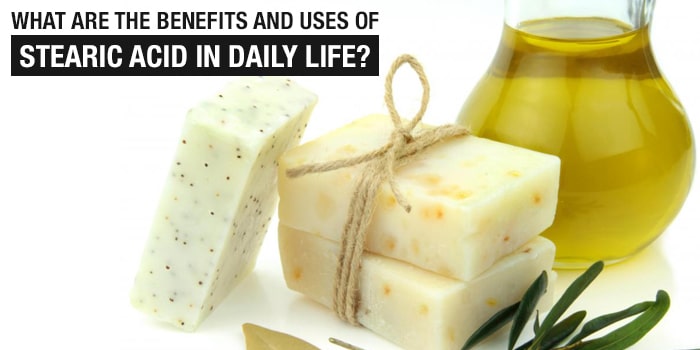- Home
- Effective use of stearic acid in our daily life
Effective use of stearic acid in our daily life
- Posted On: 2021-04-24 12:52:50
Stearic acid has an IUPAC name octadecanoic acid which is also a saturated fatty acid with an 18-carbon chain. While it is a waxy solid, its salts and esters are called stearates. Stearic acid is one of the most common saturated fatty acids found in nature following palmitic acid apart from its esters. The three molecules of stearic acid form a triglyceride which is called stearin. The saponification of triglycerides using hot water results in obtaining stearic acid from fats and oils. A mixture of stearic and palmitic acid results in commercial stearic acid.
We, at Bansal Trading Company, furnish our customers
with various personal care products that have stearic acid in them. We are also
the leading importer and exporter of stearic acid apart from their
manufacturing and distribution. The customer could contact us through our
website where details relating to the product and our company are easily
available. They could also search for any related product type or function on
our website whichever they require. The search column on our website lets
someone search with products according to the manufacturer, product function,
its application, or directly the product itself. We also provide an option of
reset while searching for products so that even though the customer selects any
wrong type, the selection could easily be changed.
Applications of Stearic Acid: Stearic acid exploits its bifunctional character in various applications. This happens mainly with a polar head group that can be attached to metal cations a non-polar chain that confers solubility in organic solvents. The use of such a combination could be seen as a surfactant and softening agent. Also, stearic acid undergoes the typical reaction of saturated carboxylic acids and esterification with a range of alcohols. The most noticeable reaction of carboxylic acids reaction with stearic acid is the one being reduced to stearic alcohols. Such a range of alcohols and reactions of saturated acids are used in a larger variety of manufacturers that may vary from simple to complex electronic devices.
As compared to vegetable fat, stearic acid is ampler in animal fat. The stearic acid content is 28-45% in the foods of cocoa butter and shea butter are the most important exceptions. To convert oleic into stearic acid commercially, fats high in oleic acid such as palm and soy may be hydrogenated. Stearic acid is produced from carbohydrates via the fatty acid synthesis machinery in terms of its biosynthesis. This production has a contributor, acetyl-CoA that contributes two-carbon building blocks.
Production of Personal Care Products: The main purpose of stearic acid is in the production of shampoos and shaving creams apart from soaps and cosmetics. The process of saponification is used in the production of soaps as stearic acid is not used directly in the production. Thus, soaps are made with saponification of triglycerides consisting of stearic acid esters. A pearly effect could be seen in shampoos, soaps, and other cosmetic products. This is possible through the usage of esters of stearic acid with ethylene glycol, glycol stearate, and glycol distearate.

Usage in Other Products: The main component of soap is sodium salt which has a soft texture but other salts are also useful for their lubricating properties. The reaction lithium hydroxide with stearic acid forms lithium stearate which is a white soft solid, which is an important component of grease. Other stearate salts of zinc, calcium, cadmium with lead are used to soften PVC, polyvinyl chloride. Along with castor oil, stearate acid is used for preparing softeners in textile sizing. This is mainly done by heating and mixing stearate acid with caustic potash or caustic soda. In the production of automobile tires, related salts are commonly used as release agents. Also, the powdered stearate acid is mixed in water and the suspension is brushed onto the surface to be parted after casting from a plaster piece mold or waste mold.
Stearate acids are used as a hardener in candies along with simple sugar or corn syrup. The reaction of stearate acid with zinc forms zinc stearate, which is used as a lubricant for playing cards (fanning powder) to ensure a smooth motion when fanning. During injection molding and pressing of ceramic powder, stearic acid forms a common lubricant. These stearate acids are often used to coat metal powders such as aluminum and iron in fireworks.

For Skincare Products: Stearate acids are often used in making skincare
products which include makeup and cosmetics as they help in removing dirt,
bacteria, and other substances from the surface of the skin. It protects the
skin surface against water loss by locking in the moisture and creates a waxy
protective barrier. It often helps in cleaning pores excessive oil and other
substances that may build up to form blackheads/whiteheads.
Company & Brands Reviews
Mahalaxmi Packers & Movers - Madurai is a company where talented employees are hired to provide complete stress-free services without any loss. Packers & Movers Madurai (mahalaxmipackersmovers.in) has packing moving, local shifting, furniture shifting, office shifting, loading and unloading of household goods, insurance, storage, industrial packing moving, corporate packing moving, car transportation by car containers. This makes us proud to say that we have a wonderful experience in this industry.
Mahalaxmi Packers and Movers
-
- 1 Review
Tata Motors Limited is a leading Indian multinational automotive manufacturing company, formerly Tata Engineering and Locomotive Company (TELCO), headquartered in Mumbai, Maharashtra, India. The company is a part of Tata Group. The company produces various types of passenger vehicles like cars, trucks, vans, coaches, buses, sports cars, construction equipment's and military vehicles. Tata Motors has manufacturing and assembly plants in Jamshedpur, Pantnagar, Lucknow, Sanand, Dharwad and Pune in India, as well as several world popular countries such as Argentina, South Africa, Great Britain and Thailand.
Tata
-
- 1 Review
AutoCarBazar provides certified second hand car in one place, users can check used cars details and can get seller details. For any enquiry Contact on +91-9311-311-012.
AutoCarBazar
-
- 3 Review
Vivo is a Chinese based mobile manufacturing company that develops and designs smartphones, smartphone accessories, software’s and online services. Vivo Company provides its phone software’s and accessories distributed through its V-AppStore and android based operation systems. It is an independent company, to developers its own products. Customers can share their feedback and review online about the products and services which can make company more reliable for the customers. Who already used Vivo Product & Services. Customer opinion and reviews help to improve and make unique to Product/Business/Services. Customer vote and rating giving a option to improve your Product/Business/Services.
Vivo Mobile Phones
-
- 1 Review
Tata Group is an Indian multinational conglomerate holding company. Its Headquarter is in Mumbai. It was founded in 1868 by Jamestji Tata. Now Tata Group is Own by Tata Sons.
Tata Group
-
- 1 Review
Related Blog
Express yourself to wide customer base.
Knowledge about computer is must in this time
It has become necessary for everybody to have the knowledge regarding of the computer. Otherwise people cannot get employment as computers have invaded most the fields.
What consumers look for in reviews?
Customers reviews are an informative way about the products descriptions for various users. They mention their experience about the products who have taken first.
Growing Business through User-Specific Content
One of the best ways to grow your business and reach the more target audience with the best quality of creative contents, photos, customers feedback, reviews, etc. Many users share their own views about the features of the product.





